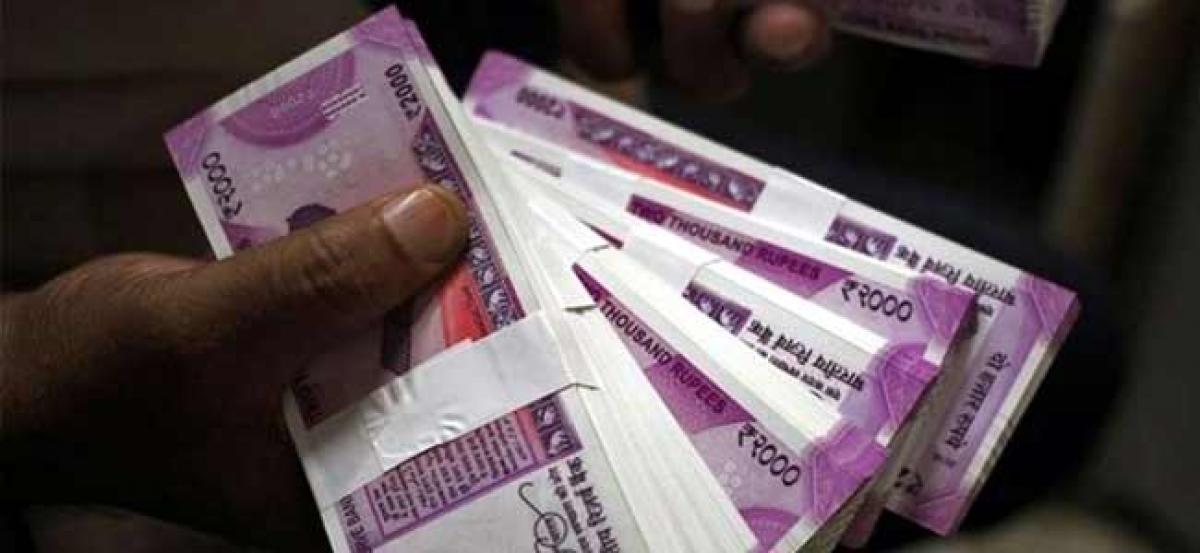Live
- Nadendla offers prayers at Appala Swamy temple
- SBI creates awareness among customers
- Education key to solve societal problems: Purandeswari
- Festive season: SCR operates 366 special trains
- Sankranthi Sambaralu at Lendi
- Minister flags off Arogya Rathams for Araku, Paderu regions
- St Joseph’s college celebrates Sankranti
- 7th International Kite Festival Set to be held in Hyderabad January 13
- Botcha seeks probe with a sitting judge
- Mahabubnagar: Asha workers demand hike in salary
Just In

Indias debt is lower than the best or emerging market economies in the world, a top IMF official has said as he cautioned that the global debt has reached a new record high of USD 182 trillion in 2017
India's debt is lower than the best or emerging market economies in the world, a top IMF official has said as he cautioned that the global debt has reached a new record high of USD 182 trillion in 2017.
Vitor Gasper, International Monetary Fund (IMF) Director of Fiscal Affairs Department, said India's debt was substantially less than the global debt as percentage of world Gross Domestic Product (GDP).
In India, private debt in 2017 was 54.5%t of the GDP and the general government debt was 70.4%t of the GDP, a total debt of about 125 of the GDP, according to the latest IMF figures. In comparison, debt of China was 247%t of the GDP.
"So, it (India's debt) is substantially less than the global debt as percentage of world GDP," Gasper told PTI.
India's debt is below the average of advanced economies and below the average of emerging market economies, he said.
"There is a positive relation between the debt to GDP ratio and the level of GDP per capita. If you compare around the world with the best economies or emerging market economies, the level of debt in India is lower," the top IMF official said.
The IMF is very much stressing that global debt at USD 182 trillion in 2017 is at a new record high, he said.
Debt in advanced economies, since the global financial crisis, has increased quite substantially while the private sector has been very gradually leveraging, he added.
"If you look at emerging market economies, that includes India, you see that private debt in the last 10 years has increased quite substantially, although in the last two years, since the end of 2015, 2016 and 2017, there is a slowdown in the process of leveraging, but debt is very high and public debt is a very high as well," Gasper said.
In the last few years in India private debt has declined from almost 60%t to 54.5.
"So, it's very stable. So, what you do see is that emerging market economies, which is where India is, there's a very fast buildup in private debt with a slowdown in the last two years, But India is basically steady. So, India is not an emerging market economy where leveraging is progressing fast," Gasper said.
According to Gasper, in emerging market economies private debt has risen much faster than public debt.
"Take China, for example. Total debt is 247%t of the GDP. But the dividing line between what is public and private debt in China is blurry. This blurriness reflects the very large number of public units and corporations, the complex layers of government, and widespread subnational off-budget borrowing," he said.
"As a result, estimates of 2017 public debt vary considerably: the official government debt figure is 37%t of GDP, while the data reported in the latest World Economic Outlook show it at 47%t of GDP, and the 'augmented' debt measure, which includes more off budget borrowing by local governments, stands at 68%t of GDP," he said.
As China works to compile a full general government balance sheet, this picture will come into clearer focus, he added.
Gasper said China had substantial government assets, reflecting years of high infrastructure investment.
These assets are larger than its liabilities, putting net worth the difference between assets and liabilities well above 100%t of the GDP, the highest among emerging economies, he said.
"This is a significant buffer when compared to total debts of public corporations, particularly considering that public corporations also have assets. So, while debt-related risks in China are large, there are also buffers.
Moreover, the government is taking steps to contain risks by reining in off-budget borrowing and strengthening oversight, resulting in a slowdown in the buildup of debt," he said.

© 2025 Hyderabad Media House Limited/The Hans India. All rights reserved. Powered by hocalwire.com







